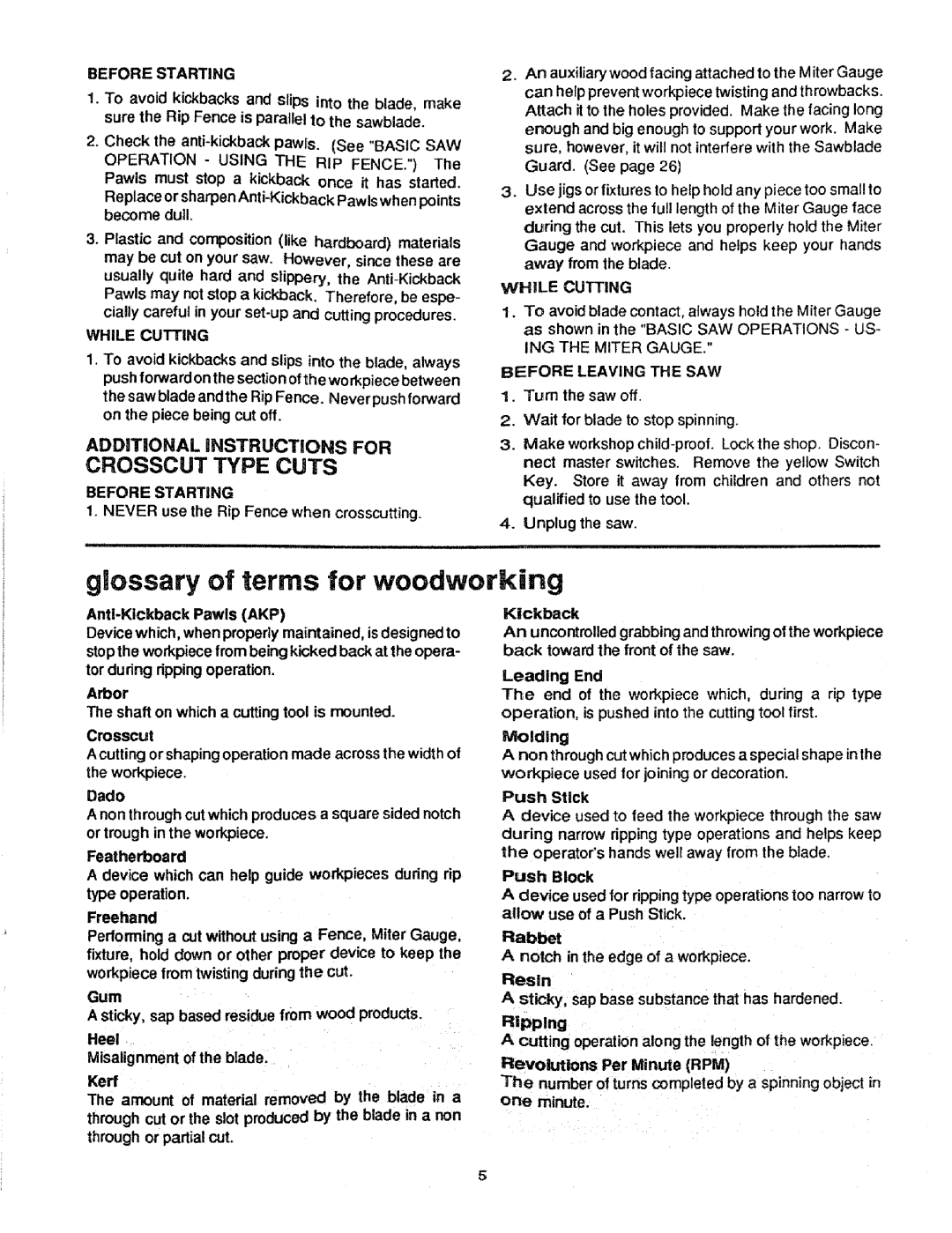298721, 113.298721, 113.298761 specifications
The Craftsman 298721, also known by its model numbers 113.298721 and 113.298761, represents a well-crafted power tool that has gained popularity among DIY enthusiasts and professionals alike. This versatile tool is designed to facilitate a variety of woodworking and construction tasks, making it an invaluable addition to any workshop.One of the standout features of the Craftsman 298721 is its robust build quality. Crafted from durable materials, this tool is designed to withstand the rigors of heavy use. Its sturdy construction not only ensures longevity but also enhances user safety, as it can endure demanding tasks without compromising performance.
Equipped with a powerful motor, the Craftsman 298721 delivers consistent performance across various applications. The high horsepower ensures that it can easily handle tough materials, allowing users to make precise cuts and achieve desired outcomes effortlessly. The motor is also designed to operate quietly, mitigating the noise commonly associated with power tools and providing a more pleasant working environment.
Another notable characteristic is its user-friendly design. The tool features an ergonomic handle that provides a comfortable grip, reducing fatigue during extended periods of use. This attention to ergonomics is evident in the lightweight build, making it easier for users to maneuver the tool with ease.
In terms of technology, the Craftsman 298721 incorporates advanced features that enhance its usability. One such feature is its adjustable speed control, allowing users to tailor the tool's performance to specific tasks. This adaptability makes it suitable for a wide range of applications, from intricate detail work to heavier cutting jobs.
The tool's compatibility with various attachments further extends its utility. Users can easily switch between different blades and accessories, enabling them to tackle diverse projects without the need for multiple tools. This flexibility makes the Craftsman 298721 a cost-effective solution for those looking to streamline their workshop.
Additionally, the safety mechanisms integrated into the Craftsman 298721 ensure that users can operate the tool confidently. Features such as blade guards and lock-off switches provide an extra layer of protection, reducing the risk of accidents while working.
In summary, the Craftsman 298721, alongside its model numbers 113.298721 and 113.298761, is a versatile and reliable power tool that combines robust construction, powerful performance, user-friendly features, and advanced technology. Whether for professional contractors or home improvement enthusiasts, this tool stands out as an essential asset for any workshop.

